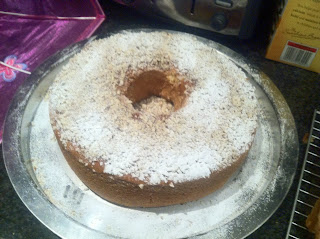Greek Orthodox tradition involves
the celebration of many a Saint’s day throughout the year, one of the most
important being St. Basil’s Day.
Known to most as New Year’s Day,
Greek tradition holds that Saint Basil brings gifts to children every January 1st, unlike other traditions where the
better known Saint Nicholas (A.K.A Santa Claus) goes round on his sleigh
handing out pressies on Christmas Eve.
It is a tradition on St Basil's
Day to serve vasilopita, literally translated as “Sweet Bread of Basil”. When
the Vasilopita is prepared, a coin is baked into the ingredients – whoever finds
the coin in their slice is said to be blessed for the new year.
Before we can all get our greedy
mitts on a slice, there are a few traditions which need to be observed. To
start, the bread is traditionally cut by the most senior
member of the family. Then, before we get to strategically pick a slice, we cut
one portion in remembrance of Jesus Christ, a second for the Virgin Mary and a
third for St. Basil the Great. Sometimes, people even cut a slice for the
Church, the house, the traveller, the visitor and for the poor. In our home, we
always cut a slice for the house (to bless it) and for the poor (to bring them
good fortune). Any more slices and there’d
be none left for us to eat!
We’re not the most religious of
Greek families but, regardless, traditions like these stick – and New Year’s
Day would certainly not be the same without them.
I’ll be adding the recipe to this post soon,
but since I don’t have it to hand, here’s a pic of what a traditional
Vasilopita should look like (yes, before you ask, it should have that hole in
the middle!)
A very happy new year to all!
Now, one more slice of Vasilopita before the detox begins…
 |
| MUST. STOP. EATING (tomorrow) |
No comments:
Post a Comment